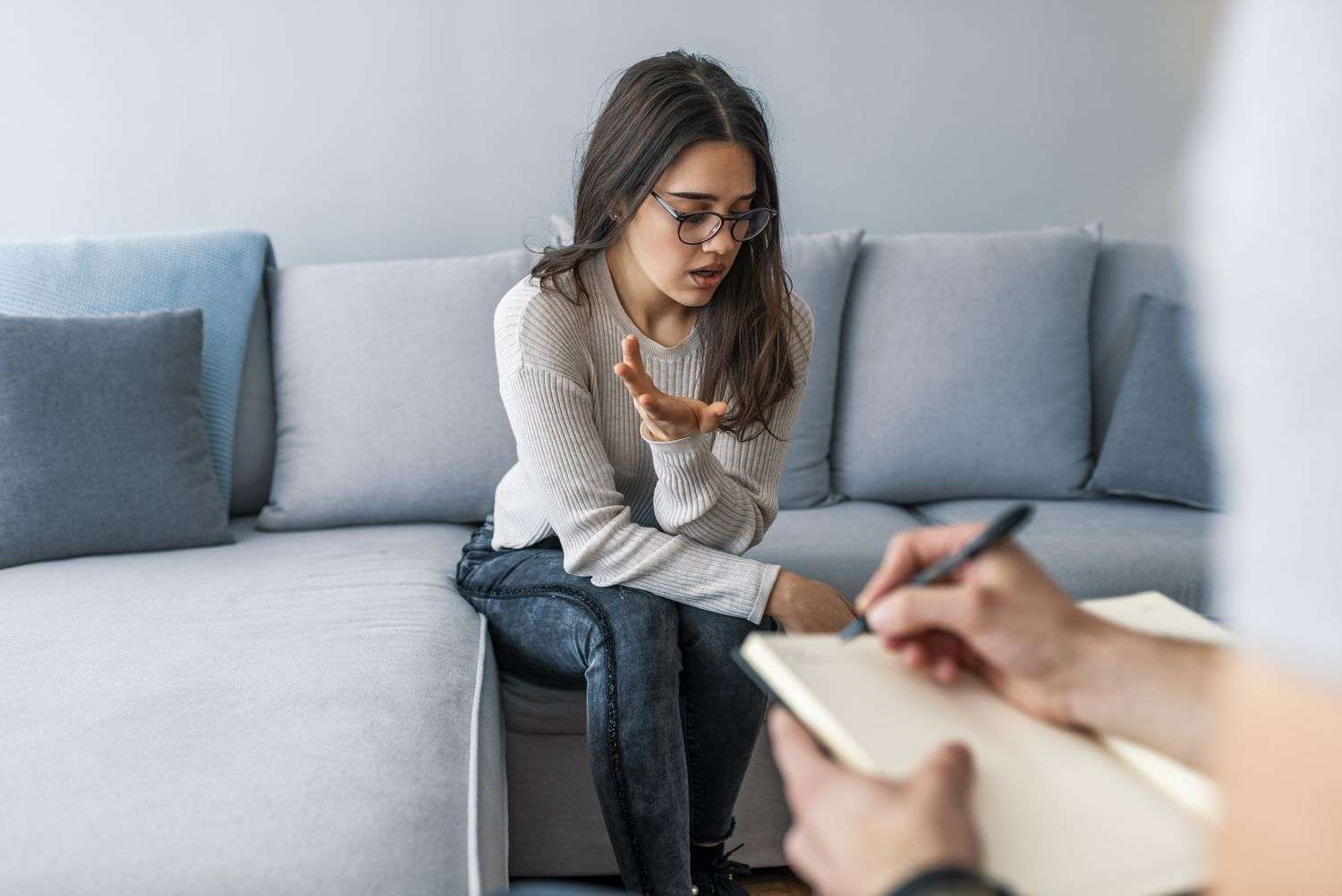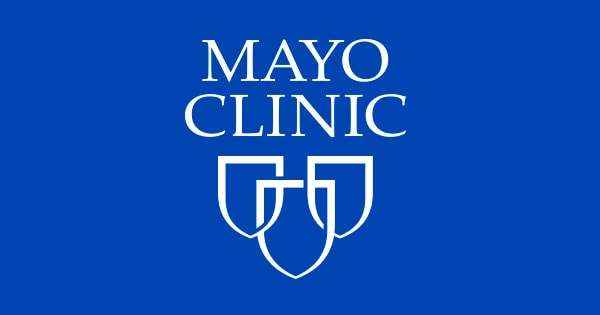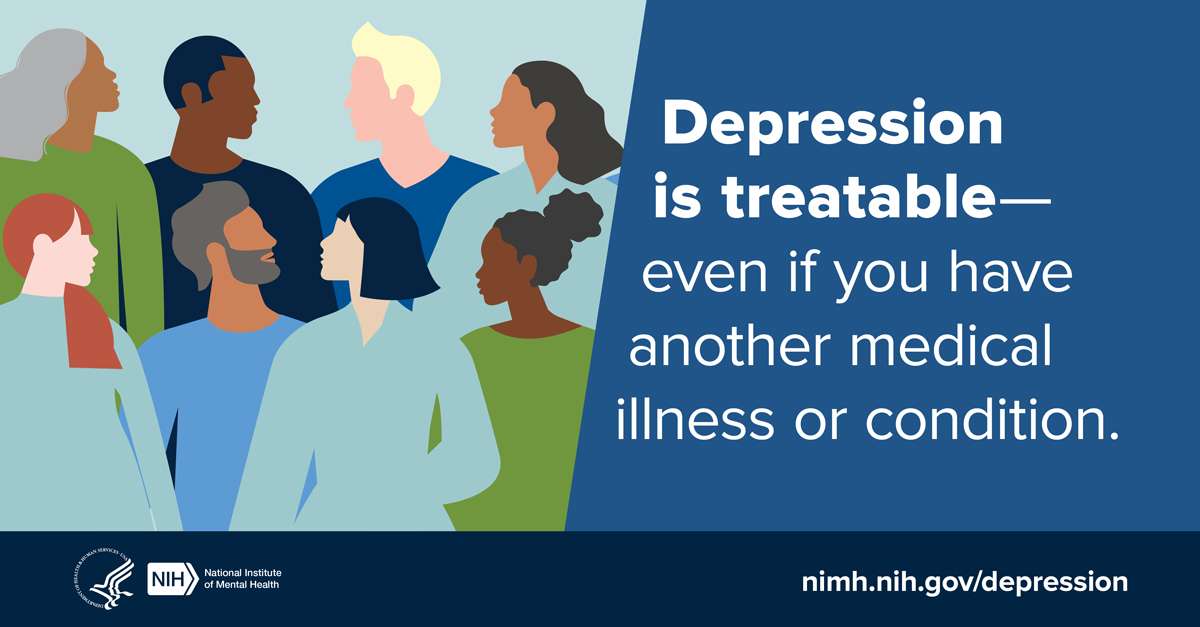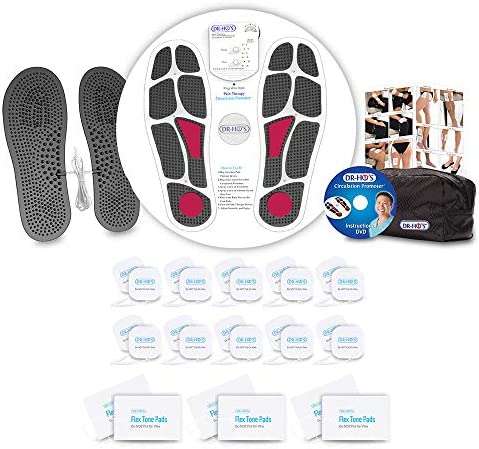Medication is typically one of the go-to treatments for adults and children dealing with attention-deficit/hyperactivity disorder, but for those who want extra support or don’t want to take medication, therapy for ADHD can be helpful in managing their condition.
Whether you’re looking for concrete steps to take and skills to learn or more insight-oriented therapy to learn how some of your habits are affecting your life and relationships, there is a type of therapy out there for you.
Types of ADHD
There are three main types of ADHD, though treatment for them all largely looks similar:
- ADHD, combined type: This type, the most common, is a mixture of impulsive and hyperactive behaviors with inattention and distractibility.
- ADHD, impulsive/hyperactive type: The least common form of ADHD, this type is characterized by impulsive and hyperactive behaviors with no inattention or distractibility.
- ADHD, inattentive and distractible type: Symptoms of this type generally include inattention and distractibility, without hyperactivity.
Types of Therapy for ADHD
There are many different kinds of therapy for ADHD, though some of the methods may vary between children and adults. Types of therapy used to treat ADHD range from dialectical behavioral therapy to mindfulness-based cognitive therapy.
Therapy for Adults With ADHD
Treatment for adults with ADHD will look a little different than treatment for children with ADHD. Children’s therapy for ADHD may involve the teachers, parents, or both.
Cognitive-Behavioral Therapy for ADHD
Cognitive-behavioral therapy is generally considered the gold standard for ADHD psychotherapy. While “regular” CBT can be helpful for ADHD, there are also specific types of CBT for ADHD.
Some of the things this can help with include improving daily life struggles such as procrastinating, time management struggles, and poor planning. CBT helps people find new coping strategies as well as finding the emotions and behaviors that interfere with implementing strategies.
The CBT for ADHD model organizes around three core modules and two optional ones:
- Psychoeducation and organizing/planning
- Coping with distractibility
- Adaptive thinking
Optional:
- Addressing procrastination
- Involvement of a partner or spouse
Mindfulness-Based Cognitive Therapy
Research has shown that this type of therapy may be helpful because of how meditation and mindfulness affect the brain and neuropsychiatry.
Some benefits may include:
- Reducing mind wandering/daydreaming and distractibility by improving the functioning of the default mode network in the brain, which modulates attention
- Learning to observe emotional states
- Emotional regulation
- Improved executive functioning
Dialectical Behavioral Therapy
Dialectical behavioral therapy is another form of therapy often used for people with ADHD.This type of therapy is focused on teaching people skills to deal with their ADHD through the following module: Mindfulness, Emotion Regulation, Interpersonal Effectiveness and Distress Tolerance, Impulsivity/Hyperactivity and Attention.
Its efficacy is proven by the fact that the control patients on a waiting list tended to have worsening troubles with attention and hyperactivity while waiting for treatment. Those who were receiving the treatment fared better, as measured by the State-Trait Anger Expression Inventory (STAXI), which assesses emotional regulation and impulse control.
ADHD Coaching
While it is technically not psychotherapy, ADHD coachingis gaining popularity as a way of managing symptoms and quality of life for people with ADHD. Though there is no standardized protocol, this type of coaching usually includes goal-setting and homework, discussing successes and roadblocks, and problem-solving.
Coaches used techniques such as text messages, emails, or phone call reminders to help clients meet their goals.
People were encouraged to use self-rewards or rewards from either the coach or others.
Supportive Psychotherapy
Supportive therapy is a form of therapy that helps clients optimize the coping skills that they already have so that these strategies can be used to reduce distress and manage symptoms such as time management and organization.
This type of therapy is very much patient-driven, symptom-focused, and measurable—such as planning to control anxiety or manage coursework.
Interpersonal Therapy
Interpersonal therapy is typically employed to address issues that may have developed between a client and others due to misunderstandings from their ADHD symptoms, such as if their forgetfulness or procrastination are affecting those in their lives.
One key feature of this type of therapy is that it may be used for the therapist to help the client see the difference between their inner experience and how their behaviors are affecting others.
This type of therapy may also address personal issues such as a sense of failure or low self esteem, that relate to the person’s ability to cope with their ADHD symptoms.
Group Therapy
Group therapy can be a helpful way for people with ADHD to learn from other people dealing with similar types of challenges and how they have dealt with or have overcome them.
A specific type of group therapy for ADHD-I (Inattentive Type) called CBT for ADHD-I teaches group members planning, how to start activities and end activities, lifestyle changes, and how to troubleshoot where they have issues in these areas.
It uses a combination of applying the techniques in the in-person sessions along with homework outside of the groups. Mindfulness meditation is also practiced to help group members reduce stress and improve attention regulation.
Narrative Therapy
Narrative therapy has been found to be helpful in people with ADHD to help reduce the self-stigma they may experience. Many people with ADHD tell themselves that they are lazy and underachieving, leading them to wonder what the purpose of trying is and thus becoming a self-fulfilling prophecy.
Narrative therapy can help people with ADHD externalize their issues, so the lack of attention becomes the problem, rather than “I am the problem.” This type of therapy can also help people identify the “sparkling moments” when things are different from the stories they tell themselves so that they can see their strengths rather than their challenges.
One study of school-aged girls who participated in narrative group therapy found improvement in their school performance following the therapy because they identified and replaced negative self-beliefs. The narrative therapy also increased their ability to see that they could find their own solutions to problems (as age-appropriate).
ADHD Therapy for Children
For children with ADHD, typically there are two major ways that therapy is delivered: by parents and by teachers; each for different reasons. Both of these methods are collaborative, with parents and teachers working together, regardless of which one is leading it.
In parent-delivered behavioral therapies, parents will be taught:
- How to discipline their child consistently and appropriately for their condition
- How to implement structure
- How to introduce positive reinforcement
- Positive ways to interact with their child
In teacher-delivered behavioral therapies, teachers learn similar strategies: how to teach children with ADHD to address their challenges, how to help them with time management and organization and how to help them overcome emotional and behavioral challenges.
A Word From Verywell
Therapy for ADHD may be particularly challenging because it requires the consistency and structure that many people with ADHD struggle with. But the right therapist will create a space where you can feel safe in managing your symptoms and learn how to live with ADHD.
There are two main types of medication for ADHD: stimulant and non-stimulant. They work in different ways in the brain to help control ADHD’s key symptoms.
Not all people respond to the same medication in the same way. They may need to have their medication adjusted at first to find the right type and dosage. Sometimes, ADHD medication causes side effects. These usually go away in a few days. (Find out how ADHD medication works in the brain.)
People with ADHD are also more likely to have anxiety or depression. So health professionals may suggest medication for those issues, too.
Learn more in this guide to ADHD medication.
The research is clear: ADHD medication paired with behavioral therapy is the most effective treatment for attention deficit hyperactivity disorder (ADHD) in children — particularly those who also exhibit oppositional behavior. This finding comes from the National Institute of Mental Health and its landmark Multimodal Treatment Study of Children with ADHD, and is reinforced by the American Academy of Pediatrics. But the power of therapy for ADHD does not diminish with the age of the patient. Many children and adults use ADHD therapy to teach behavioral, social, and academic skills that may help manage ADHD symptoms throughout life.
Consult with a mental-health professional to help determine what type of ADHD therapy is best suited for you or your child, and use the overview below to understand the 9 most popular therapies for ADHD.
ADHD Therapy #1: Behavioral Therapy for Children
Behavioral therapy addresses problem behaviors common among children with ADHD by structuring time at home, establishing predictability and routines, and increasing positive attention. A good behavioral therapy plan begins with common-sense parenting, according to William Pelham, Jr., Ph.D., director of the Center for Children and Families at the State University of New York at Buffalo.
ADHD behavioral therapy plans should do the following:
-
Reinforce good behavior with a reward system.
-
Discourage negative behavior by ignoring it.
-
Take away a privilege if the negative behavior is too serious to ignore.
-
Remove common triggers of bad behavior.
Thomas E. Brown, Ph.D., author of A New Understanding of ADHD in Children and Adults, cautions that “The benefits a child receives from behavioral treatment are strongly influenced by the ability of the parent to consistently implement the program plan.” Fortunately, a variety of credible Parent Training Programs teach strategies to encourage positive behavior from a child and strengthen the parent-child relationship.
ADHD Therapy #2: Cognitive Behavioral Therapy for Adults
Cognitive behavioral therapy (CBT) is essentially brain training for ADHD. It is a short-term, goal-oriented form of psychotherapy that aims to change negative patterns of thinking and reframe the way a patient feels about herself and her symptoms of ADHD.
CBT does not treat the core symptoms of ADHD: inattention, hyperactivity, and impulsivity. Rather, it helps lessen the life impairments experienced by people with ADHD, such as procrastination and time management. There’s no evidence that CBT can replace drug therapy for ADHD, or even permit lower dosages, but research does suggest that it helps adults with ADHD more than do other forms of therapy. A 2010 study by Boston’s Massachusetts General Hospital found that a combination of drug therapy and CBT was more effective at controlling ADHD symptoms than was drug therapy alone.
An effective CBT program will help adults with ADHD correct the following distorted thought processes and more:
- All-or-nothing thinking — viewing
everything as entirely good or entirely bad: If you don’t do something perfectly, you’ve failed.
- Overgeneralization — seeing
a single negative event as part of a pattern: For example, you
always
forget to pay your bills.
- Mind reading —
thinking you know what people think about you or something you’ve done — and it’s bad.
- Fortune telling
— forecasting that things will turn out badly.
- Magnification and minimization —
exaggerating the significance of minor problems while trivializing your accomplishments.
- “Should” statements —
focusing on how things
should
be, leading to severe self-criticism as well as feelings of resentment toward others.
- Comparative thinking —
measuring yourself against others and feeling inferior, even though the comparison may be unrealistic.
ADHD Therapy #3: Dialectical Behavior Therapy for Adults
Dialectical Behavioral Therapy (DBT), like CBT, focuses on the social and emotional challenges associated with ADHD and other neuro-psychological disorders. Created by Marsha Linehan, Ph.D., ABPP, a professor of psychology at the University of Washington and founder of The Linehan Institute, DBT was initially designed to treat the harmful behaviors of patients diagnosed with borderline personality disorder (BPD). It is now one of the most successful treatments for improving emotional regulation skills. DBT is taught in a series of skill-based modules in weekly group sessions — each one focused on a particular skill. Individual therapists provide additional support to personalize the use of these skills in life situations.
ADHD Therapy #4: ADHD Coaching
ADHD coaches help children, teens, and adults with ADHD organize and take charge of their lives. More specifically, coaches can help their clients achieve emotional/intellectual growth, strong social skills, effective learning strategies, compelling career and business exploration, and thoughtful financial planning.
A professionally trained ADHD coach can realistically assist his or her ADHD clients in building skills like:
-
Time, task, and space management
-
Motivation and follow-through
-
Developing systems for success
-
Healthy communications and relationships
-
Strategic planning and perspective
-
Making conscious & wise choices
-
A simplified and more orderly life
-
Achieving a balanced, healthy lifestyle
One of the best ways to find an ADHD coach is through the ADHD Coaches Organization (ACO). This worldwide professional membership organization offers resources for coaches and those who seek them alike.
ADHD Therapy #5: Brain Training or Neurofeedback
Neurofeedback uses brain exercises to reduce impulsivity and increase attentiveness in children and adults with ADHD. By training the brain to emit brain-wave patterns associated with focus, as opposed to those associated with day-dreaming, neurofeedback helps to rein in ADHD symptoms like impulsivity, distractibility, and acting out.
Typically, neurofeedback patients wear an electrode-lined cap while performing a complex cognitive task, such as reading aloud. A computer reads the brain activity then maps the areas of the brain where there is too much or too little brain-wave activity – the theoretical sources of the patient’s ADHD symptoms.
Critics argue that neurofeedback has not been rigorously studied in any large, double-blind studies and that, though some patients report improvements in attention, it has little effect on other problems associated with ADHD. Others have observed large improvements in neurofeedback patients.
ADHD Therapy #6: Play Therapy
Play therapy is used to help children with ADHD connect, learn, provide reassurance, calm anxiety, and improve self-esteem. Play is an indirect way for therapists to recast children’s perceptions, cognitions, and behaviors. As Carol Brady, Ph.D., a child psychologist practicing in Houston, says: “Children communicate metaphorically through play. As a therapeutic tool, it’s like giving a sweet pill instead of a bitter one.” Playing with a young child is essential for her to feel connected, secure, and attached.
ADHD Therapy #7: Music Therapy
For patients with ADHD, music therapy bolsters attention and focus, reduces hyperactivity, and strengthens social skills in three ways:
- Music Provides Structure.
Music is rhythm, rhythm is structure, and structure is soothing to an ADHD brain struggling to regulate itself to stay on a linear path.
- Music Fires Up Synapses.
Research shows that pleasurable music increases dopamine levels in the brain. This neurotransmitter — responsible for regulating attention, working memory, and motivation — is in low supply in ADHD brains.
- Music is Social.
“Think of an orchestra,” says Tomaino, a 30-year veteran in music therapy. “If one instrument is missing, you can’t play the piece. All ‘voices’ are necessary.”
ADHD Therapy #8: Art Therapy
Art therapy helps children and adults with ADHD and other neuropsychological disorders who communicate their thoughts more easily through visual images and art making than they do with written or spoken words. Art therapy can be especially effective for active, busy children with ADHD, as it keeps their hands moving and triggers an acute mental and emotional focus not always achieved in talk therapy.
Children with ADHD use art therapy because the processes of drawing, painting, and sculpting can help address emotional problems, develop interpersonal skills, manage behavior, reduce stress, and increase self-awareness. Through art therapy, children with ADHD can build mental flexibility, problem-solving skills, and communication skills as they explain what they made to a parent or friend. Art also allows for organic moments of positive social interactions, like sharing materials, making compliments, or even making suggestions.
ADHD Therapy #9: Equine Therapy
Equine Assisted Psychotherapy (EAP) is an experiential ADHD therapy in which clients interact with horses — with the guidance of a specially trained mental-health professional and an equine specialist — instead of talking about their problems.
Natural Lifemanship is one model of EAP that is effective for treating ADHD. It is a trauma-informed approach based on neuroscience and the role of healthy, connected relationships. Clients learn to regulate their body energy and pick up on non-verbal cues to build a relationship with a horse. The horse provides immediate feedback to the client’s actions as other humans can’t or won’t do.
Here at Neurohealth Associates we specialize in Neurofeedback treatments. Neurofeedback may be helpful if you have unwanted mood swings, problems sleeping, anger management issues, motivation, or poor self-esteem. The easy, noninvasive treatment can painlessly improve your mental health condition and outlook on life.
Schedule a consultation with NeuroHealth today and find out how we can help you.
Tags: adhd, attention deficit, behavior, brain health, brain mapping, Children, clinical research, EEG Biofeedback, EFD, emotions, executive function, kids, mental health, motivation, neurofeedback, self development, symptoms
Tags: add



